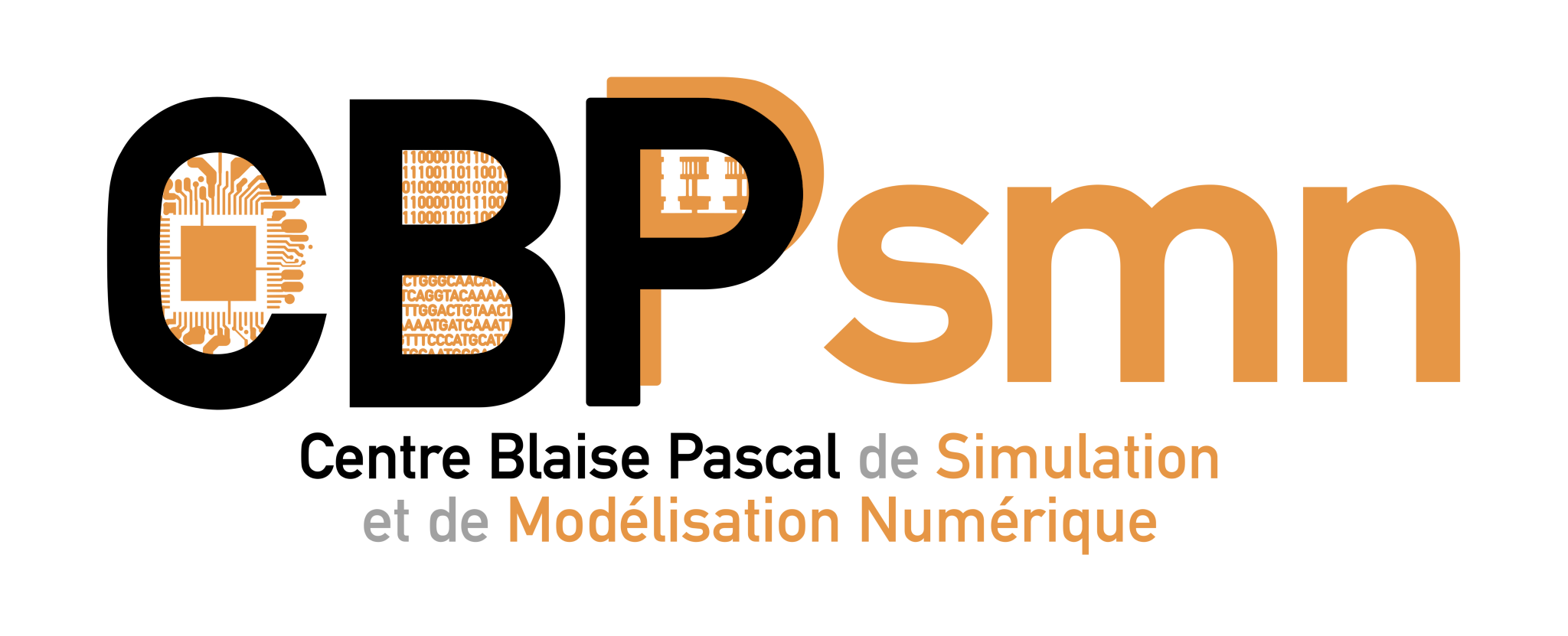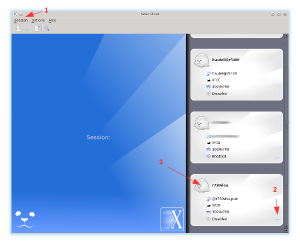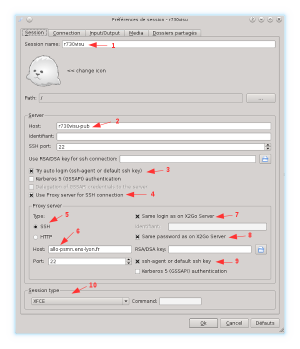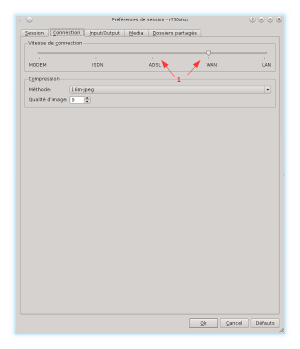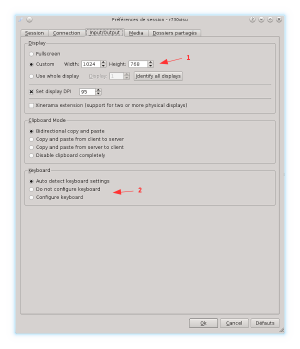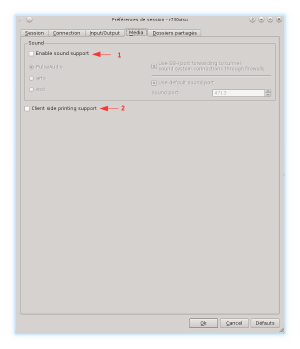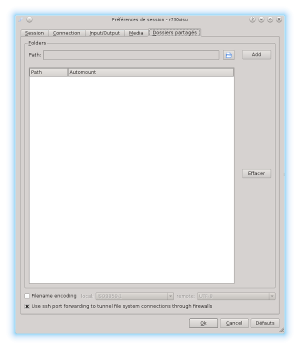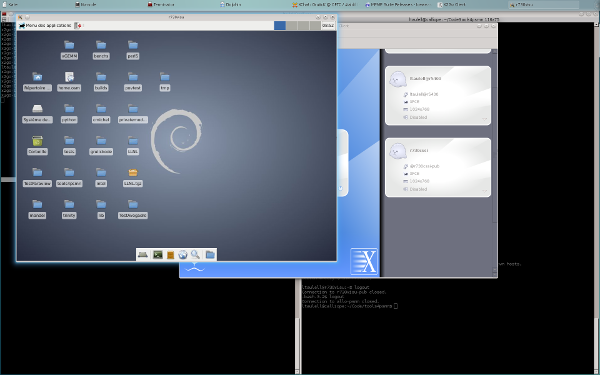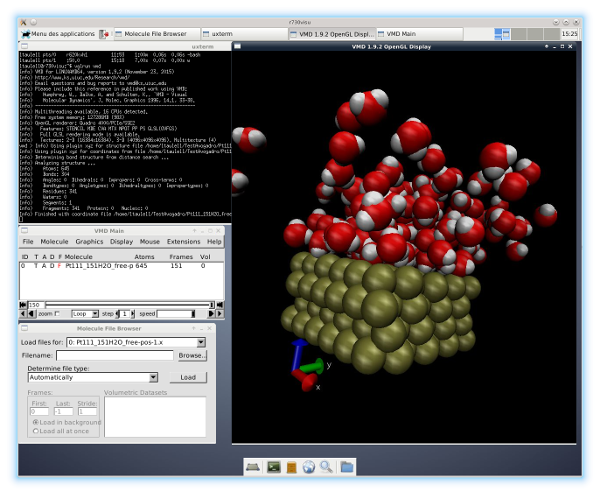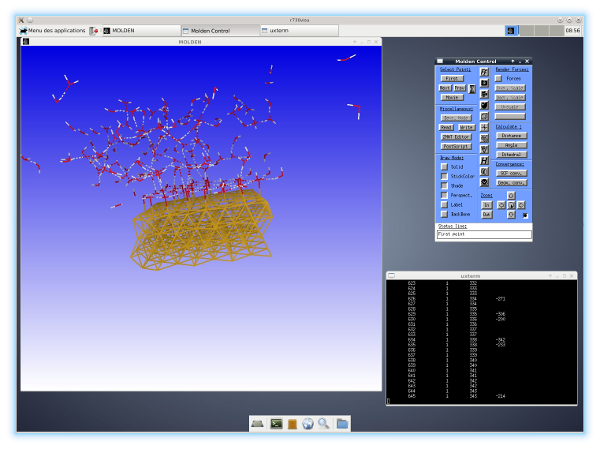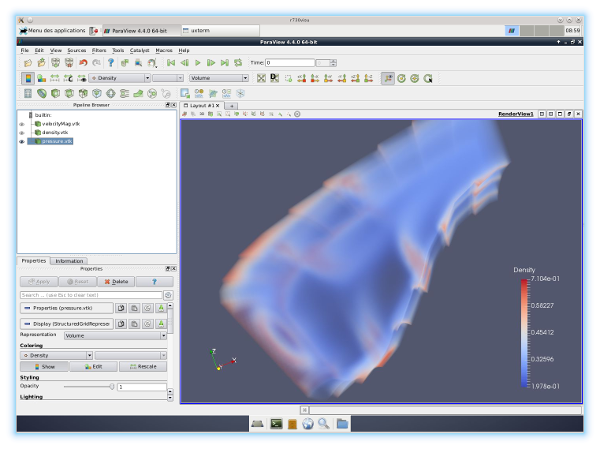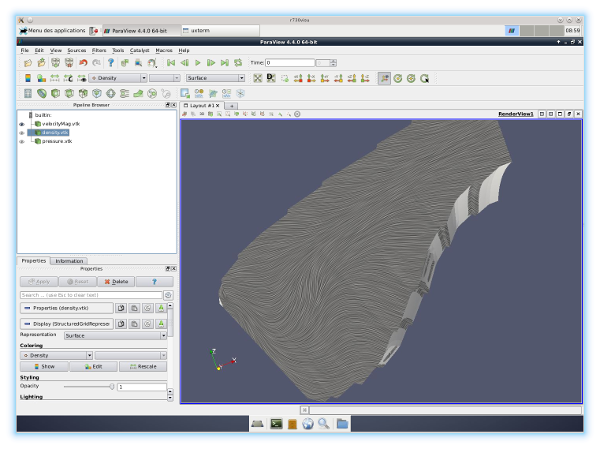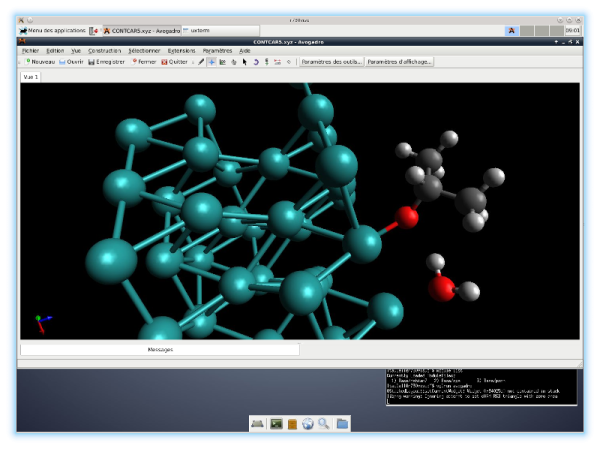Ceci est une ancienne révision du document !
Visualization server
The r740visu server is dedicated to extensive visualization (OpenGL/Mesa/CUDA8) at PSMN.
It is equipped with 2 Intel processors Xeon Gold 5122 @3.6GHz (16 logical cores) with 192 GiB of RAM. It is accessible using x2go and has a hardware accelerator NVidia Quadro P4000©.
Finally, and most importantly, the server give access to the /scratch/E5N (scratch system common to E5-* queues.
r740visu is not a submission node.
This machine was set up thanks to the preparatory work, recipes and integrations carried out on the CBP experimental platform.
Prerequisites
- Install x2go (x2goclient) on user's workstation (Linux, Mac or Windows ⇒ http://wiki.x2go.org/)
Configure the x2goclient
- New session
- Session → New,
- You can return to the parameters by clicking on the small arrowhead,
- The session is saved in this white rectangle.
- Parameters: Tab Session
- Name the session,
- Host = r740visu,
- Try auto login → Checked,
- Use proxy server → Checked,
- SSH → Checked,
- Host = allo-psmn.psmn.ens-lyon.fr,
- Same login → Checked,
- Same password → Checked,
- ssh-agent → Checked,
- Session type =
XFCE
.
 WARNING : the
WARNING : the Session type NEED to be SET TO XFCE 
- Parameters: Tab Connection
- Parameters: Tab Input/Output
- Customize the screen size, or leave in Full/whole mode, your choice,
- If necessary, force keyboard settings (Mac and Windows).
- Parameters : Tab Media
- Parameters: Tab Directory
Connection
Expected result:
Usage
Every application installed in the PSMN environment can be used as is.
Numeric keyborad
If your numeric keypad is not recognized, in a terminal, run the program numlockx .
modulefiles
For every application requiring the loading of a modulefile, it is necessary to first load from a terminal the modulefile then run the application.
Sometimes, x2go sessions don't load the ~/.profile. You can force it, by hand, with source ~/.profile, or add this line to your ~/.bashrc :
source /usr/share/lmod/lmod/init/bash
VirtualGL
For every application requiring hardware acceleration (OpenGL / GLX / GLSL / …), after loading the corresponding modulefile, you must prefix the call to the application by calling VirtualGL: vglrun MyApp
Examples
- VMD
In a terminal run:
source ~/.profile module load VMD/1.9.2 vglrun vmd
- molden/gmolden
In a terminal run:
source ~/.profile module load Molden/5.4 vglrun gmolden
- ParaView
In a terminal run:
source ~/.profile module load ParaView/4.4.0 vglrun paraview
- Avogadro
In a terminal run:
source ~/.profile vglrun avogadro
